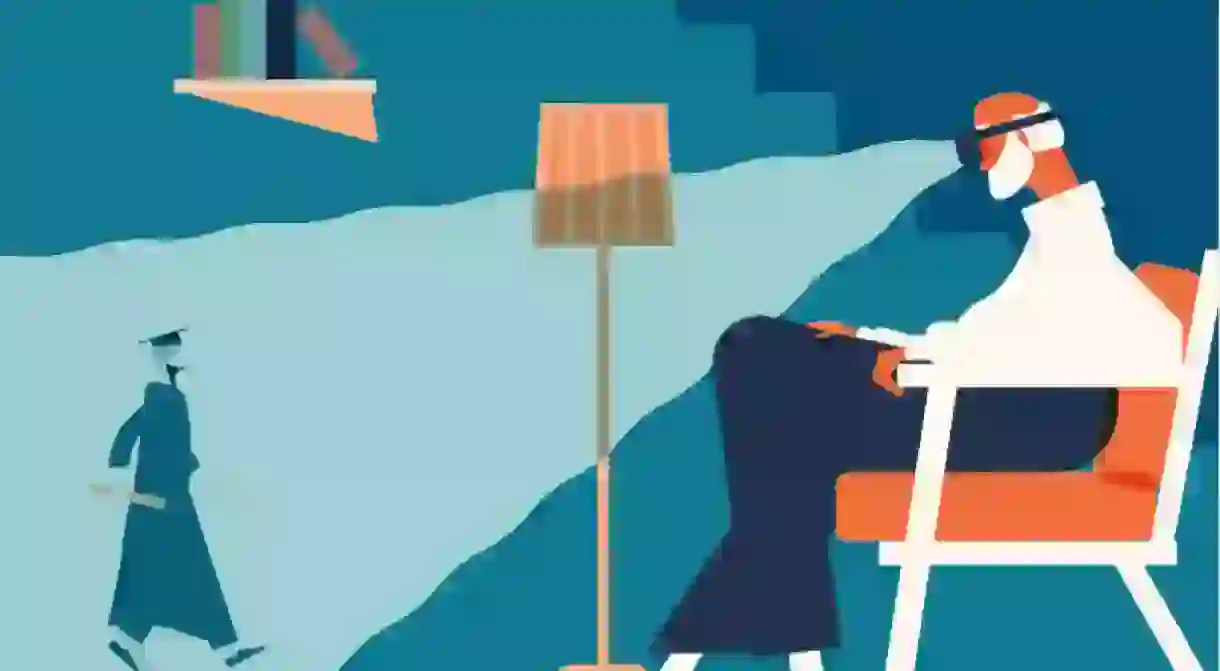Virtual Reality Is Helping Elderly People Explore the World

Travel is a luxury we sometimes take for granted. But the older we get, the more difficult it can be to see the world. Luckily, with every generation that passes, getting older becomes easier – thanks to technology like virtual reality.

VR, like most new technologies, is rarely associated with the elderly. Despite being one of the fastest growing demographics (with each new generation living longer than their parents), elderly people are often overlooked when new technology enters the market, most likely due to their perceived inability to adopt new concepts. But VR can be used to improve the quality of life for the elderly, and make sure their dreams of travel are never ignored.
Jake Kahana set out to prove the potential of VR for the elderly with his project BettVR With Age. He wanted to use virtual reality to improve the lives of seniors with mobility difficulties, a project inspired by his desire to spend more quality time with his Grandma despite being separated by long distances. The project, which took 18 months and involved testing and focus groups with the elderly, resulted in a series of VR films and software built to help those who aren’t mobile.
Craig Palmer was one of the seniors who benefitted from the project. Palmer was formerly a singer and actor in Broadway shows in New York, but has been bed-bound since 2013. Using a Samsung Gear headset, Palmer was transported to his old haunts in New York city: busy Manhattan streets, vibrant nightlife spots, and of course the bright lights of Broadway. “This is wonderful,” Palmer says as he sits in his bed with the headset on. “I am free.”
That feeling of familiarity can be important to seniors, something that Kahana realized in his research. He identified two areas that elderly people wanted to explore with VR – nostalgia and education. “The software allows us to plug in any address and use Google Maps and street view. That was the nostalgia piece,” Kahana tells Culture Trip.
But how did the elderly people who tried out the software react to VR? “At first it’s awkward,” says Kahana. “There’s an initial discomfort then when the video starts playing they forget where they are. They react to the scene like they’re there.”

In the focus groups run by Kahana, nobody was sad or disappointed with the concept, although some had an anti-technology view and claimed they’d never use it. But 90% were excited and curious of what else they could see, according to Kahana. “I suggested meeting a Rabbi or a doctor via VR and they rolled their eyes. They did those types of things every day, they wanted something new.”
Kahana isn’t the only one working in this field. At an MIT Sloan Healthcare Innovation Prize competition in February, a company called Rendever walked away with the $25,000 grand prize for a VR platform that let residents in assisted-living facilities explore the world. The platform also aimed to provide cognitive therapy and aid in the diagnosis of dementia.
“We’re using virtual reality to improve the way we age, so you don’t become isolated, don’t become depressed, and you can keep your mind happy and healthy,” said Rendever co-founder and CEO Dennis Lally, an MIT Sloan School of Management student who launched the startup with classmate Reed Hayes.
The Rendever system includes multiple virtual reality headsets and custom software that syncs them together. This means users can join up together in a virtual world, heading to exotic destinations, sports games, the weddings of relatives, and visit childhood homes. This also allows the system to work as reminiscence therapy, where patients discuss past experiences with virtual cues.
Trial studies of the Rendever system suggested that resident happiness at the Brookdale Senior Living Community in Massachusetts was increased by 40 percent.

Virtual reality hasn’t quite taken off yet, and has some development to go, both in hardware and software, before it can be made mainstream. But with applications such as these, every generation on the planet will soon be accustomed to virtual worlds. “Seniors are one of the fastest growing populations – it’s often an overlooked generation. The more these technologies have applications in the real world, the more we’ll target the underserved people,” says Kahana.













